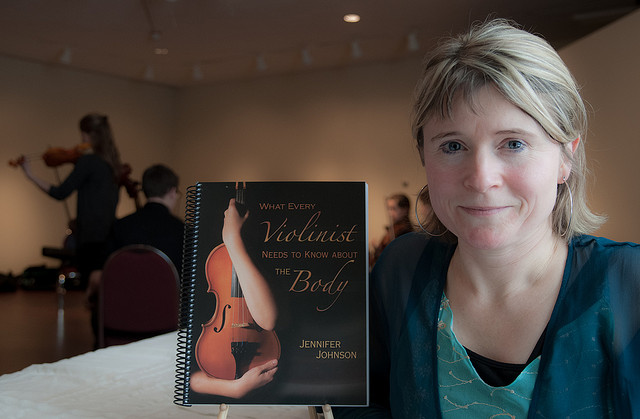 What Every Violinist Needs to Know About the Body
What Every Violinist Needs to Know About the Body
There are 2 kinds of violinists in the world; those that have been deemed to be “natural players” and those who have not. All of us who feel like we have been relegated to the second category have fervently wished to find a way to overcome our limitations and graduate to the first category. Though natural players obviously never wish to become “unnatural”, they still encounter untold frustrations when, as teachers, they try to relate to students who are experiencing pain and limitations. Despite the most earnest desire to help their students, “natural players” frequently struggle to address theses kinds of problems since they are so foreign to their own experience. This book has been written to help both kinds of violinists.
Musicians move for a living
When shown video footage of professionals performing in their chosen field, dancers and athletes immediately describe what they are seeing with movement vocabulary; something that violinists rarely do. When I teach the What Every Violinist Needs To Know About The Body Course to violinists it takes some prompting before the class begins describing the movement they see. Words like communicating or self-expression are used before someone mentions a movement word. Many of us violinists simply never saw our- selves as people who move for a living and therefore we pay very little attention to quality of our movement. The irony is that dancers and athletes expect to retire in their 30’s or 40’s whereas musicians expect to go on playing into their golden years.
Maybe we think that a violinist only really needs to be aware of how he sounds rather than having any concerns for how his body feels. Perhaps we have even bought into the self-image of one who must suffer for his art and consider it necessary or even somewhat glamorous to feel pain for the purposes of musical expression. No matter why we have arrived at this level disregard for how we use our bodies when we play, it is exactly this disregard that causes so much pain and anguish among violinists who suddenly find themselves unable to play because of injury.
The Good Posture Disease
The first cultural disease is the good posture disease. Many of us were so indoctrinated as young school children as to what good posture means that, to this day, as soon as the word posture is mentioned, there is an automatic response. Everyone in the room sits up straight; chests are pushed out, causing an exaggerated curve in the spine; necks are flattened, shoulders are pulled back; chins are tucked and breathing is restricted. This is what happens to our children with every admonishment to “sit up with good posture”, and just when it seems that these children, being told to “sit-up” in backwards sloping desks at school all day, couldn’t lose any more of their natural inclination to be on balance, they are handed a violin for the first time.
A spine has 2 halves, a front half and the back half. The back half of the vertebrae is made of protective bony processes. Run a hand over someone’s back and you will feel the tips of the processes that point to the rear only. What you feel is still just the tip of the iceberg of the back half the spine; even the processes that point to the sides (still part of the back half) are buried so deeply that you cannot feel them with your fingertips.
The back half is protective and bony because it is designed to protect the all-important spinal cord. The front half of the spine, located right at the core, is shaped very differently. The individual vertebrae which make up this half the spine are solid, smooth and rounded, rather like semi-circular stacking blocks.
Separating each of these stacked vertebrae in the front are soft, gel-filled discs. The purpose of these discs is to cushion one vertebra from the next as the upper body’s weight is borne and delivered to the front half of the spine. The discs do not continue into the back half of the spine, because this would interrupt the continuity of the spinal cord from the brain to the rest of the body.
Violinists affected by the “good posture disease” who spend hours a day playing, all the while sending weight down the back half of the spine, are at risk of slipping a disk. A disc can slip out from its neat stacking between two vertebrae and bulge out on one side when the back halves of the vertebrae are squeezed too closely together by receiving the majority of the body weight from above. A slipped disc is extremely painful because, when it bulges out, it touches and crowds the nerve bundles that stem off from the spinal cord.
When someone stands on balance, a line can be drawn through through the middle of the body, bisecting it vertically. This line represents the body’s core. One can see how the the core line runs through the front half of the spine and all the major joints of the body.
Violinists who organize their movement from a place of balance around the core move more effortlessly and freely. Those who do not can be seen massaging their necks and backs because their muscles are working overtime to compensate for the lack of stacked-up balance on the bones along their core.